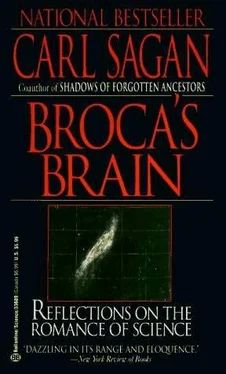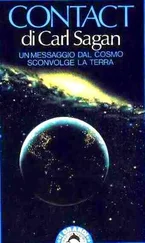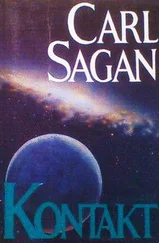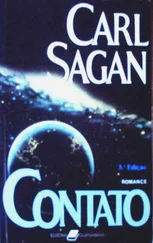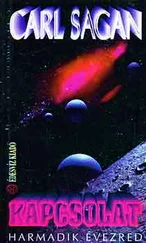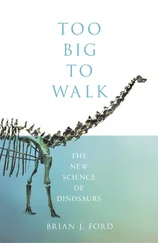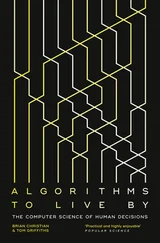Carl Sagan - Broca's Brain - The Romance of Science
Здесь есть возможность читать онлайн «Carl Sagan - Broca's Brain - The Romance of Science» весь текст электронной книги совершенно бесплатно (целиком полную версию без сокращений). В некоторых случаях можно слушать аудио, скачать через торрент в формате fb2 и присутствует краткое содержание. Жанр: Физика, на английском языке. Описание произведения, (предисловие) а так же отзывы посетителей доступны на портале библиотеки ЛибКат.
- Название:Broca's Brain: The Romance of Science
- Автор:
- Жанр:
- Год:неизвестен
- ISBN:нет данных
- Рейтинг книги:3 / 5. Голосов: 1
-
Избранное:Добавить в избранное
- Отзывы:
-
Ваша оценка:
- 60
- 1
- 2
- 3
- 4
- 5
Broca's Brain: The Romance of Science: краткое содержание, описание и аннотация
Предлагаем к чтению аннотацию, описание, краткое содержание или предисловие (зависит от того, что написал сам автор книги «Broca's Brain: The Romance of Science»). Если вы не нашли необходимую информацию о книге — напишите в комментариях, мы постараемся отыскать её.
Broca's Brain: The Romance of Science — читать онлайн бесплатно полную книгу (весь текст) целиком
Ниже представлен текст книги, разбитый по страницам. Система сохранения места последней прочитанной страницы, позволяет с удобством читать онлайн бесплатно книгу «Broca's Brain: The Romance of Science», без необходимости каждый раз заново искать на чём Вы остановились. Поставьте закладку, и сможете в любой момент перейти на страницу, на которой закончили чтение.
Интервал:
Закладка:
NO PHOTOGRAPHIC maps of the surface of Venus exist, because the planet is perpetually enshrouded by opaque clouds. Nevertheless, surface features are being mapped by ground-based radar. Already it is apparent that there are craters and mountains, and other topographical features of stranger aspect. The success of the Venera 9 and 10 spacecraft in obtaining photographs of the planet’s surface suggests that someday photographs may be returned from aircraft or balloons in the lower Venus atmosphere.
The first prominent features discovered on Venus, regions highly reflective to radar, were given unassuming names such as Alpha, Beta and Gamma. The present Venus nomenclature committee, under the chairmanship of Gordon Pettengill of the Massachusetts Institute of Technology, proposes two categories of names for Venus surface features. One category would be pioneers in radio technology whose work led to the development of the radar techniques that permit mapping the surface of Venus: for example, Faraday, Maxwell, Heinrich Hertz, Benjamin Franklin and Marconi. The other category, suggested by the name of the planet itself, would be women. At first glance, the idea of a planet devoted to women may appear sexist. But I think the opposite is true. For historical reasons, women have been discouraged from pursuing the sorts of occupations now being memorialized on other planets. The number of women after whom craters have so far been named is very small: Sklodowska (Madame Curie’s maiden name); Stickney; the astronomer Maria Mitchell; the pioneer nuclear physicist Lisa Meitner; Lady Murasaki; and only a few others. While by the occupational rules for other planets women’s names will continue to appear occasionally on other planetary surfaces, the Venus proposal is the only one that permits adequate recognition to be made of the historical contribution of women. (I am glad, however, that this idea will not be applied consistently; I would not myself want to see Mercury covered with businessmen and Mars with generals.)
In a fashion, women have traditionally been commemorated in the asteroid belt (see Chapter 15), that collection of rocky and metallic boulders which circle the Sun between the orbits of Mars and Jupiter. With the exception of a category of asteroids named after heroes of the Trojan War, it used to be that all asteroids were named after women. First it was largely women of classical mythology, such as Ceres, Urania, Circe and Pandora. As available goddesses dwindled, the scope broadened to include Sappho, Dike, Virginia and Sylvia. Then, as the floodgates of discovery opened and the names of astronomers’ wives, mothers, sisters, mistresses and great-aunts were exhausted, they took to naming asteroids after real or hoped-for patrons and others, with a female ending appended, as, for example, Rockefelleria. By now more than two thousand asteroids have been discovered, and the situation has become moderately desperate. But non-Western traditions have hardly been tapped, and there are a multitude of Basque, Amharic, Ainu, Dobu and!Kung feminine names for future asteroids. In anticipation of an Egyptian-Israeli détente, Eleanor Helin of the California Institute of Technology proposed calling an asteroid she discovered Ra-Shalom. An additional problem-or opportunity, depending on how one views it-is that we may soon obtain close-up photographs of asteroids, with surface details that will cry out to be named.
Beyond the asteroid belt, on the planets and large moons of the outer solar system, no nondescriptive names have so far been bestowed. Jupiter, for example, has a Great Red Spot and a North Equatorial Belt, but no feature called, say, Smedley. The reason is that when we see Jupiter we are looking at its clouds, and it would not be a very fitting or at least not a very long-lived memorial to Smedley to name a cloud after him. Instead, the present major question on nomenclature in the outer solar system is what to name the moons of Jupiter. The moons of Saturn, Uranus and Neptune have satisfying or at least obscure classical names (see Table 2). But the situation for the fourteen moons of Jupiter is different.
TABLE 2
Saturn : Neptune
Janus:Triton
Mimas:Nereid
Enceladus:
Tethys: Uranus
Dione:Miranda
Rhea:Ariel
Titan:Umbriel
Hyperion:Titania
Iapetus:Oberon
Phoebe:
: Pluto
:Charon
The four large moons of Jupiter were discovered by Galileo, whose theological contemporaries were convinced by a vague amalgam of Aristotelian and Biblical ideas that the other planets could have no moons. The contrary discovery by Galileo was disconcerting to fundamentalist churchmen of the time. Possibly in an effort to circumvent criticism, Galileo called the moons the Medicean satellites-after his funding agency. But posterity has been wiser: they are known instead as the Galilean satellites. In a similar vein, when William Herschel of England discovered the seventh planet he proposed calling it George. If wiser heads had not prevailed, we might today have a major planet named after George III. Instead we call it Uranus.
The Galilean satellites were assigned their Greek mythological names by Simon Marius (commemorated on the Moon by a crater 27 miles across), a contemporary of Galileo and a disputant with him for the priority of their discovery. Marius and Johannes Kepler felt that it would be extremely unwise to name celestial objects after real people and particularly after political personages. Marius wrote: “I want the thing done without superstition and with the sanction of theologians. Jupiter especially is charged by the poets with illicit loves. Especially well-known among these are three virgins, whose love Jupiter secretly coveted and obtained, namely: Io… Callisto… and Europa… Yet even more ardently did he love the beautiful boy Ganymede… and so I believe that I have not done badly in naming the first Io, the second Europa, the third, on account of the splendor of its light, Ganymede, and lastly the fourth Callisto.”
However, in 1892 E. E. Barnard discovered a fifth moon of Jupiter with an orbit interior to Io’s. Barnard resolutely insisted that this satellite should be called Jupiter 5 and by no other name. Since then, Barnard’s position has been maintained, and of the fourteen Jovian moons now known, only the Galilean satellites had, until recently, names officially sanctioned by the IAU. However unreasonable it may be, people show a strong preference for names over numbers. (This is clearly illustrated in the resistance of college students to being considered “only a number” by the college bursar; by the outrage of many citizens at being known to the government only by their social security number; and by the systematic attempts in jails and prison camps to demoralize and degrade the inmates by assigning them a numeral as their only identity.) Soon after Barnard’s discovery, Camille Flammarion suggested the name Amalthea for Jupiter 5 (Amalthea was in Greek legend the goat that suckled the infant Zeus). While being suckled by a goat is not precisely an act of illicit love, it must have seemed, to the Gallic astronomer, adequately close.
The IAU committee on Jovian nomenclature, chaired by Tobias Owen of the State University of New York at Stony Brook, has proposed a set of names for Jupiter 6 through 13. Two principles guided their selection: the name chosen should be that of “an illicit love” of Jupiter, but one so obscure as to have been missed by those indefatigable cullers of the classics who name asteroids, and must end with an a or an e depending on whether the moon goes around Jupiter clockwise or counterclockwise. But in the opinion of at least some classical scholars, these names are obscure to the point of bewilderment, and the result leaves many of the most prominent Jovian paramours unrepresented in the Jupiter system. The result is particularly poignant in that Hera (Juno), the wife so often scorned by Zeus (Jupiter), is not represented at all. Evidently, she was inadequately illicit. An alternative list of names, which includes most of the prominent paramours as well as Hera, is also shown in the table below. Were these names employed, it is true they would duplicate asteroid names. This is in any case already a fact for the four Galilean satellites, where the amount of confusion thus engendered has been negligible. On the other hand, there are those who support Barnard’s position that numbers are sufficient; prominent among these is Charles Kowal [10]of the California Institute of Technology, the discoverer of Jupiter 13 and Jupiter 14. There seems to be merit in all three positions and it will be interesting to see how the debate turns out. At least we do not yet have to judge the merits of contending suggestions for naming features on the Jovian satellites.
Читать дальшеИнтервал:
Закладка:
Похожие книги на «Broca's Brain: The Romance of Science»
Представляем Вашему вниманию похожие книги на «Broca's Brain: The Romance of Science» списком для выбора. Мы отобрали схожую по названию и смыслу литературу в надежде предоставить читателям больше вариантов отыскать новые, интересные, ещё непрочитанные произведения.
Обсуждение, отзывы о книге «Broca's Brain: The Romance of Science» и просто собственные мнения читателей. Оставьте ваши комментарии, напишите, что Вы думаете о произведении, его смысле или главных героях. Укажите что конкретно понравилось, а что нет, и почему Вы так считаете.
